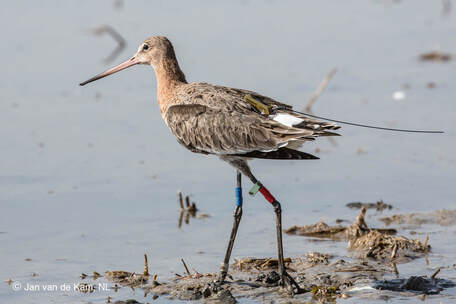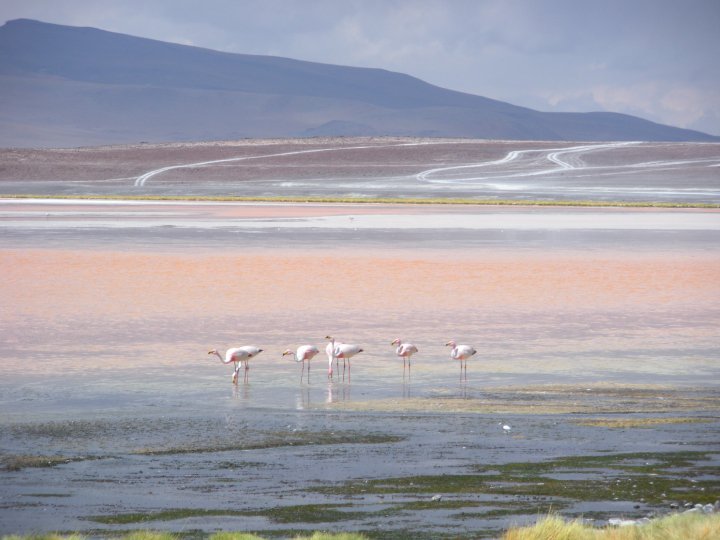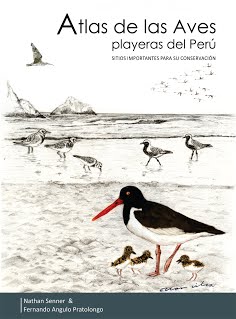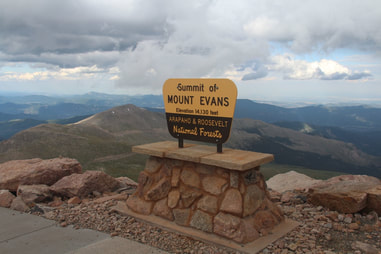|
Environmental change is a ubiquitous feature of ecosystems around the globe. Whether it is related to climatic change, human development, or natural processes, organisms must be able to respond and adapt to variations in their environment. We study the mechanisms by which individuals are able to respond to change and link these strategies to variation in the size of entire populations and species. We primarily work with species that inhabit extreme environments or exhibit extreme behaviors, as these species are predicted to be less capable of coping with rapid environmental changes. |
|
The Limits of Sustainability
Saline lakes are disappearing worldwide because of increased anthropogenic water use, mining activities to supply minerals used in electric vehicles (e.g., lithium), and increasingly frequent and prolonged droughts. We are working with hydrologists (Dr. Johnnie Moore, University of Montana), physiologists (Dr. Jorge Gutiérreez, Universidad de Extremadura), social scientists (Dr. Datu Agusdinata, Arizona State University), and citizen scientists to assess how changes in water levels within these lakes affect their salinity, trophic ecology, and ability to support healthy ecosystems. Together, we are working to provide a complete picture of how coupled natural and human systems are connected via complex feedback loops and how we may be able to conserve these rare, but incredibly important resources worldwide. Example publication: Gutiérrez et al. 2022, Proceedings of the Royal Society B |
|
Improving Nearctic Shorebird Population Estimates
In order to understand how populations are affected by the ability of individuals to respond to environmental change, it is necessary to develop accurate estimates of population sizes and trends. Accurate population estimates are frequently difficult to generate for migratory shorebirds, which may have large distributions that encompass remote parts of the world. To surmount these difficulties, we have helped develop a survey methodology that can be implemented at large spatial scales with the help of trained volunteer observers. Beginning in 2010, in collaboration with Fernando Angulo and CORBIDI, we carried out the first-ever comprehensive ground-based survey of the Peruvian coast for shorebirds. In 2014, in partnership with the Red de Observadores de Aves Chile, we extended this effort to include the entire Chilean coastline as well. In 2019 we expanded our work yet again to cover the entirety of southern South America, from Peru to Brazil in collaboration with partners from the Western Hemisphere Shorebird Reserve Network, SAVE Brazil, Aves Argentinas, and Aves Uruguay. Example publication: Garcia-Walther et al. 2017, Chilean Shorebird Atlas |
 Photo: Tom Johnson
Photo: Tom Johnson
Shifting Phenologies Under a Changing Climate
Hudsonian Godwits have one of the most extreme annual cycles of any migratory bird: In collaboration with colleagues Rose Swift (U.S. Geological Survey), Juan Navedo (Universidad Austral de Chile), and Jose Masero (Universidad de Extremadura), we are exploring how environmental changes occurring throughout the godwit annual cycle are altering the survival and reproductive success of the godwit population that migrates between Chile and Alaska. This work involves the use of miniaturized tracking devices to detail the migrations of individual godwits, in depth assessments of godwit pre-migratory physiology, characterization of the habitat needs of godwits during their northward migration, and multi-trophic level studies to link godwits with community-wide dynamics in sub-Arctic Alaska.
Example publication: Wilde et al. 2022 Ecology 103: e3743
Hudsonian Godwits have one of the most extreme annual cycles of any migratory bird: In collaboration with colleagues Rose Swift (U.S. Geological Survey), Juan Navedo (Universidad Austral de Chile), and Jose Masero (Universidad de Extremadura), we are exploring how environmental changes occurring throughout the godwit annual cycle are altering the survival and reproductive success of the godwit population that migrates between Chile and Alaska. This work involves the use of miniaturized tracking devices to detail the migrations of individual godwits, in depth assessments of godwit pre-migratory physiology, characterization of the habitat needs of godwits during their northward migration, and multi-trophic level studies to link godwits with community-wide dynamics in sub-Arctic Alaska.
Example publication: Wilde et al. 2022 Ecology 103: e3743

The Costs of Human Disturbance
Stopover sites are key portions of the annual cycles of migratory species and can be especially susceptible to the effects of anthropogenic activities. In collaboration with Felicia Sanders from the South Carolina Department of Natural Resources and Andy Johnson from the Cornell Lab of Ornithology, we are investigating the stopover ecology of Whimbrel along the South Carolina and Georgia coastlines and, especially, their use of a nocturnal roost on Deveaux Bank. This work is highlighting how even small places can have outsized importance to the stability of entire species.
Example publication: Sanders et al. 2021, Wader Study
Stopover sites are key portions of the annual cycles of migratory species and can be especially susceptible to the effects of anthropogenic activities. In collaboration with Felicia Sanders from the South Carolina Department of Natural Resources and Andy Johnson from the Cornell Lab of Ornithology, we are investigating the stopover ecology of Whimbrel along the South Carolina and Georgia coastlines and, especially, their use of a nocturnal roost on Deveaux Bank. This work is highlighting how even small places can have outsized importance to the stability of entire species.
Example publication: Sanders et al. 2021, Wader Study
|
Range Shifts in Parasites and Pathogens
Along with Jon Velotta (Denver University), Zac Cheviron, and Art Woods (University of Montana), we are investigating how climate change may be pushing pathogens and parasites to move upslope, exposing high-elevation extremophile populations to novel selection pressures for which they may have few defenses. To do this, we are combining experimental work in the laboratory and intensive tracking studies in the field, as well as incorporating physiological and genomic techniques focused on both the hosts and the parasites. This holistic approach will provide insight into how extremophiles may be able to respond to novel biotic interactions, as well as other types of environmental change. Example publication: Wilde et al. 2019, Functional Ecology |
 Photo: Andy Johnson
Photo: Andy Johnson
Spatio-Temporal Variation in Survival and Reproductive Success
Understanding regional variation in demographic parameters is an important facet of linking individual-level responses to changes in population-level dynamics. The Arctic Shorebird Demographics Network combines intensive field efforts at 16 sites spread across the Holarctic to create a broad-scale, yet detailed picture of shorebird reproductive biology and inter-annual variation in survival. As a co-leader at the Churchill, Manitoba site with Erica Nol (Trent University) and Laura McKinnon (York University), we have been focusing our efforts on Hudsonian Godwits, Whimbrel, Dunlin, and Semipalmated Plovers.
Example publication: Kwon et al. 2019, Ecological Monographs
Understanding regional variation in demographic parameters is an important facet of linking individual-level responses to changes in population-level dynamics. The Arctic Shorebird Demographics Network combines intensive field efforts at 16 sites spread across the Holarctic to create a broad-scale, yet detailed picture of shorebird reproductive biology and inter-annual variation in survival. As a co-leader at the Churchill, Manitoba site with Erica Nol (Trent University) and Laura McKinnon (York University), we have been focusing our efforts on Hudsonian Godwits, Whimbrel, Dunlin, and Semipalmated Plovers.
Example publication: Kwon et al. 2019, Ecological Monographs

The Combined Effects of Climate and Agricultural Change
As part of the Global Flyway Network, we are researching how climate change and agricultural intensification are disrupting the biology of migratory birds. We are exploring this international problem using three types of tracking devices combined with intensive field efforts in Southwest Friesland, The Netherlands, and Extremadura, Spain. We are then using these findings to work with the citizen-conservation initiative Kening fan 'e Greide, BirdLife Netherlands, and the Province of Fryslân to develop agricultural practices that profit both the birds and the farmers.
Example publication: Verhoeven et al. 2022, Ecological Solutions and Evidence
As part of the Global Flyway Network, we are researching how climate change and agricultural intensification are disrupting the biology of migratory birds. We are exploring this international problem using three types of tracking devices combined with intensive field efforts in Southwest Friesland, The Netherlands, and Extremadura, Spain. We are then using these findings to work with the citizen-conservation initiative Kening fan 'e Greide, BirdLife Netherlands, and the Province of Fryslân to develop agricultural practices that profit both the birds and the farmers.
Example publication: Verhoeven et al. 2022, Ecological Solutions and Evidence



